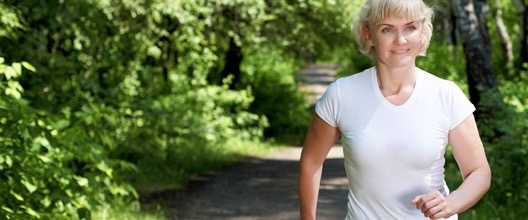A fracture every three seconds worldwide
Older adults are encouraged to be aware of osteoporosis risk factors and to consult doctors if at risk.
 Marine fractured her spine while bending to help her disabled mother. Lo Lan broke her hip after tripping over a loose carpet in her home. Both women have something in common. They were unaware that they had osteoporosis, the disorder which causes bones to become weak and as fragile as glass.
Marine fractured her spine while bending to help her disabled mother. Lo Lan broke her hip after tripping over a loose carpet in her home. Both women have something in common. They were unaware that they had osteoporosis, the disorder which causes bones to become weak and as fragile as glass.
People with osteoporosis can fracture a bone even after the most minor fall from standing height, or from simply sneezing, or bending to tie a shoelace. Worldwide, one in three women and one in five men aged 50 or over will sustain an osteoporosis-related fracture. Approximately 200 million people are affected, resulting in a fracture every three seconds.
On World Osteoporosis Day, which was on October 20, the International Osteoporosis Foundation (IOF), together with its 250 member organisations worldwide, urged all older adults to be aware of osteoporosis risk factors and to consult their doctors if they are at risk.
Although there are many factors which can point to possible underlying osteoporosis, among the most common are: A broken bone after age 50 following a low-trauma fall; height loss of more than 4cm (ca 1.5 inches); long-term use of glucocorticoids and other bone damaging medications; being frail and underweight; and parental history of osteoporosis or hip fracture. A quick and easy way to alert oneself to possible risk is with the new online IOF Osteoporosis Risk Check.
A fracture in one’s senior years can be life-changing. Acute pain, lengthy rehabilitation, long-term disability, dependence on caregivers, and loss of quality of life are all too common. Hip fractures can be life-threatening and loss of function and independence among survivors is profound, with 40 percent unable to walk independently and 60 percent requiring assistance a year later. Because of these losses, 33 percent are totally dependent or in a nursing home in the year following a hip fracture.
IOF President Professor Cyrus Cooper, stated, “All adults must make their bone health a priority. Maintaining strong bones and muscles is the key to an active, mobile future at older age. If you’re at risk, don’t hesitate to ask your doctor for testing and an appropriate treatment strategy if needed. Today, there is a wide range of effective osteoporosis treatments which have been shown to reduce the risk of hip fractures by up to 40 percent and spine fractures by 30 to 70 percent.”
According to IOF’s website, available medications used to treat osteoporosis include: Alendronate, Risedronate, Ibandronate, Zoledronic Acid, Raloxifene, Abaloparatide, Teriparatide and PTH, Denosumab, and Hormone replacement therapy (HRT). As with any medication, there are risks and side effects. In addition to drug therapy, calcium and vitamin D can be prescribed to ensure adequate intake and to ensure maximum effectiveness of the drug therapy. Patients should also be aware that attention to lifestyle factors must go hand-in-hand with any drug treatment prescribed.
(** PHOTO CREDIT: International Osteoporosis Foundation)

0 Comments